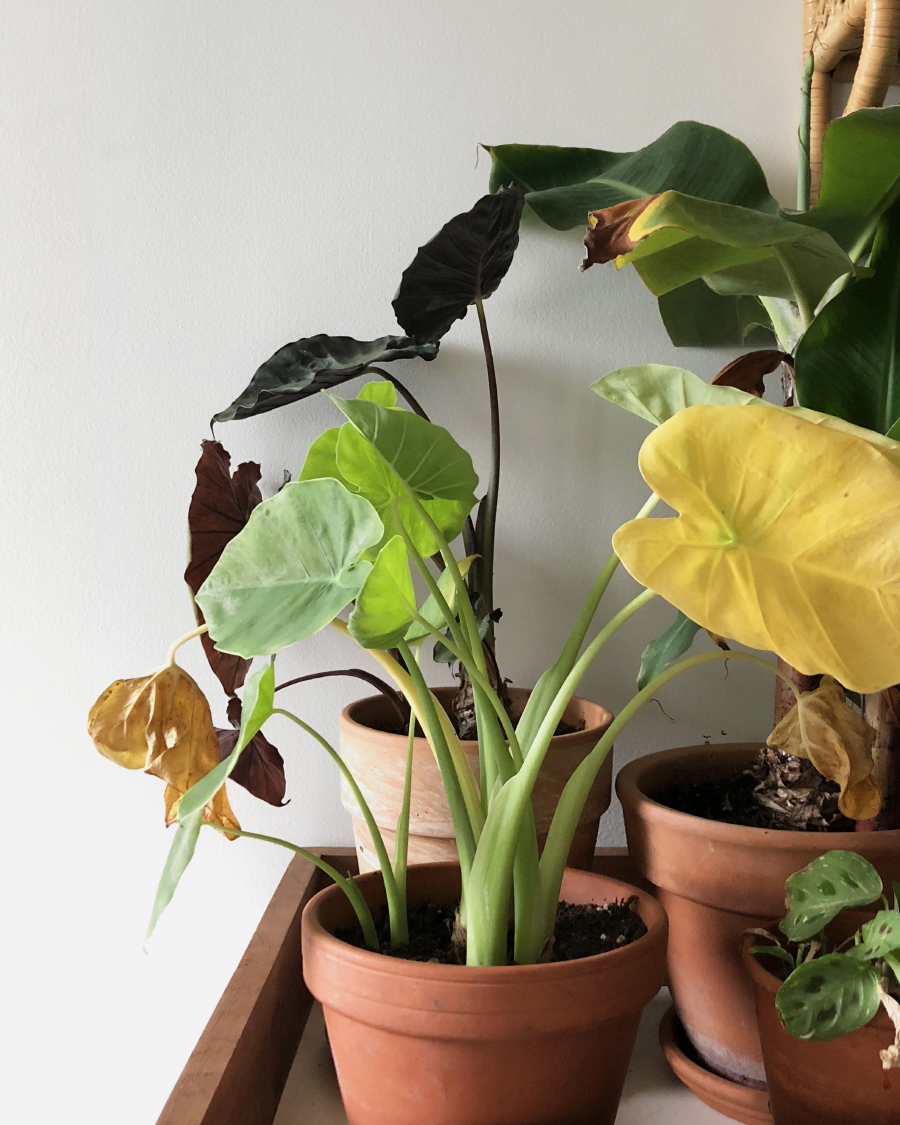Bringing Plants Indoors for the Winter
#5. “Soil Drench” demonstration
I don’t bring a lot of houseplants outdoors for the summer anymore as I dedicate my rooftop to mostly vegetable gardening and annual flowers. However, some plants (like my citrus, coffee arabica plant and jasmine) really need that outside life to up they go. Fast forward, now fall has come.
When do I know when to bring them in?
Where I live (Canada), autumn starts September 22nd. This is around the time when I start thinking about bringing my plants in and do “interior prep”. That is, moving things around the house to make space for additional plants.
Exact dates to bring plants inside vary wildly plant-to-plant and zone-to-zone. For me, in zone 6 Toronto, I start bringing plants in when temperatures at night regularly are 10°C. If it’s only 1-2 nights out of the week this dip low (as long as it isn’t frost!), I’ll still keep them out.
Which plants do I bring indoors?
Depends on the plant! Look up “frost hardiness” for each plant you want to bring indoors online. For my location, I bring all tropicals indoors, and succulents. You can attempt to bring potted herbs inside, but they are very difficult to survive indoors unless you’ve got adequate light and humidity, which often means using a grow light and humidifier. I personally don’t bother bringing common herbs in anymore, like basil and mint. If I want to grow herbs indoors, I use my Click & Grow system, which provides adequate light during the winter and is self-watering (I genuinely love this thing #notsponsored).
Ex-indoor plants weathering the rooftop with their new outdoor neighbours
Grown outdoors from a colocasia corm
Preparing the Plants
So you’ve got your potted plants ready to be brought indoors. Here’s my check list
❶ Clean-up: prune any dead or unsightly leaves. Clear any debris from the soil surface and discard. Additionally, you can remove the top 1” of soil (where bugs may have laid eggs) and replace with fresh potting mix.
❷ Rinse: you can flush out bugs and spiders with a hose. If you live in a condo, use a watering can, then give the plant a good shake after. Optionally, you can run the plant under your shower and proceed with a soap treatment while it’s in your bathroom.
❸ Soap spray: to kill soft-bodied pests, spray down your plant with an insecticidal soap (DIY with 1 tsp Dr. Bronner's castile soap : 1 cup water, or 1:3 if the plant is sensitive). Concentrate on the underside of the leaves and leave 15 minutes or until dry.
❹ Soil Drench (optional): if you’re particularly sensitive to bugs entering the home, you can perform a soil drench (also known as a soap soak or soap bath). You can read my post here. I actually don’t do this step all the time, only if I know the plant has had pest problems. For regular bugs, I let my cats take care of any remaining (cat lady perks!).
How clean you want your plants to be before they enter your home depends on your comfort level with cleanliness and your willingness for other tiny organisms to live with you. Over time I’ve eased on over-cleaning my plants and have sometimes simply hosed down a plant with water and bought it inside. I’ve found that many houseplant pests (like mealies, spidermites, and thrips) aren’t contracted outdoors: outdoor environments actually help control these pests! So I’ve become less paranoid over the years and mainly worry about tracking dirt on the floor, than bugs.
What to Expect
Bringing a plant indoors means you’ve moved them to an entirely different environment so the plant will adjust. You can helping minimize acclimation stress by bringing them inside when your indoor and outdoor temperatures are similar (keeping the windows open will help with this). That means you don’t have to wait for the “night temperatures being 10°C” suggestion. Instead, bring them in much earlier, such as late summer. I tend to procrastinate, so I stretch it out to cooler nights but you don’t have to.
Once they’re inside, some hardier plants will keep truckin’ like nothing has happened. Others, will yellow and shed a few older leaves to adjust to the lower indoor light. Some will even die back all the way and become dormant: this happens to many of my alocasia.
Overall, expect your plant to look less full than when it was outdoors.
Natural leaf shed from acclimating to the indoors
Pilea peperomioides with minimal shedding due to adequate light
Support my Work by Purchasing an Art Print!
Related Posts:

















Spa day for your plants: the benefits of giving your houseplants a shower.